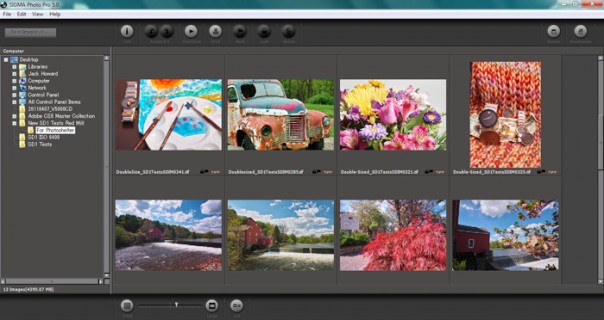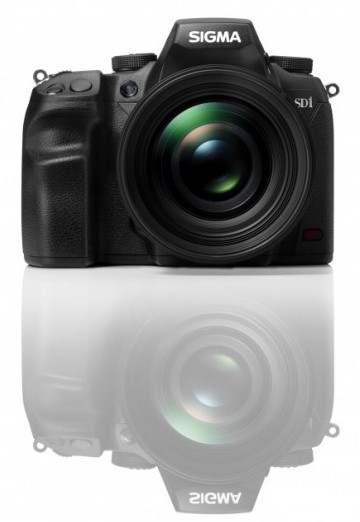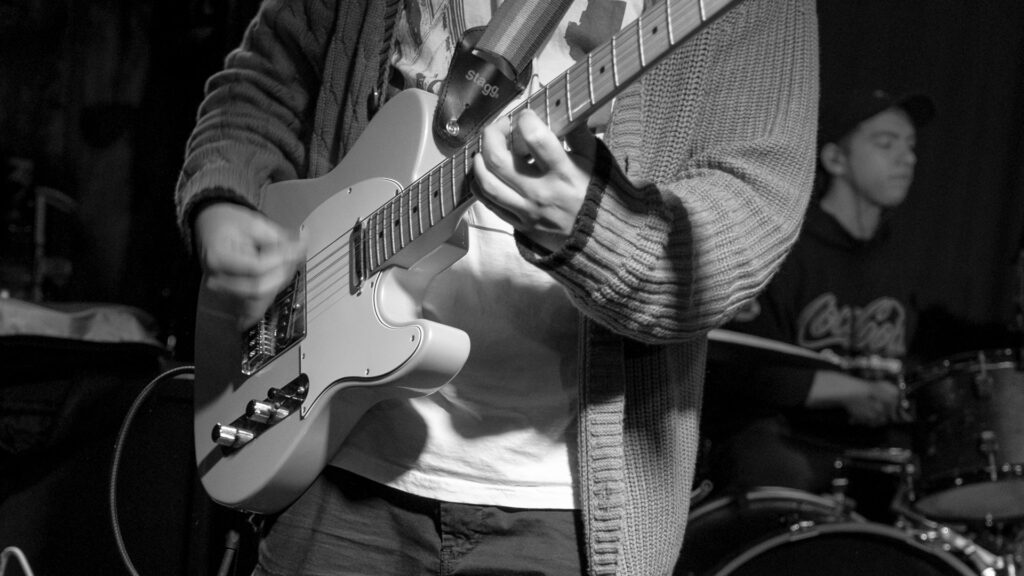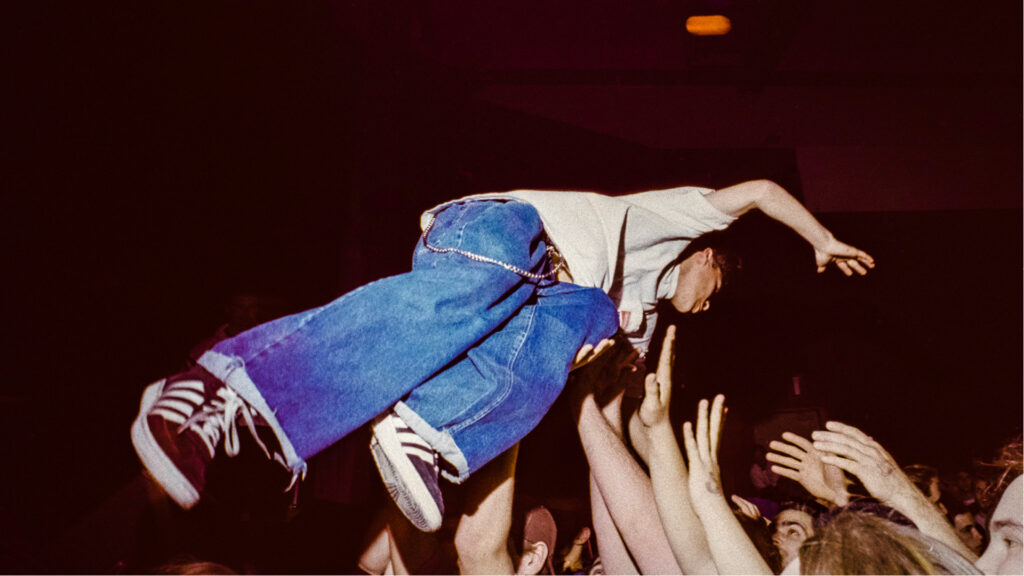by Jack Howard
I’ve been lucky enough to spend a little bit of time with a prototype Sigma SD1 over the past week, and I have got to tell you: I am very excited about spending more time making photos with this new flagship Foveon-chipped SLR.
This rock-solid camera feels like a classic film-based 35mm SLR, with a gloriously uncluttered mode dial that lets you shoot in full Program, Aperture and Shutter Priority Program, and Manual mode. That’s it. This is a purist’s camera. On the LCD side of things, the menus and interfaces are clean, uncluttered, and intuitive on that 3-inch 460K LCD. This is a camera focused on making images, not navigating submenus.
On the inside is the brand new Foveon 4800x3200x3 APS-C X3 Direct Image sensor, dual TRUE II engines for X3F Raw plus JPEG capture (a Sigma SLR first), along with flexible X3F Raw image size. Of course, this is all on a bigger sensor (23.5mmx 15.7mm) than earlier SD SLRs, for a focal length multiplication factor of 1.5x for the SD1 compared to 1.7x for the SD15. (You can read the full press release for more details about the feature set of the SD1 and this blog posting explaining the science of Foveon sensors.) Add in improved autofocus operations with 11 twin-cross type sensors, and a host of other upgrades and the picture becomes clear: the Sigma SD1 is all about the images.
So far, I’ve been amazed at the superfine detail, amazingly smooth color gradations, crisp edges, the depth and richness of the colors, and simply the overall feel of the test images I shot last week with the SD1. I can’t wait to get this camera back in my hands to make more images.

One of my favorite things about processing X3F Raw files through Sigma Photo Pro is just how crisp and sharp the shots are, both at normal size, and at double size. Since there is no blur filter in front of the Foveon sensor, and since color is captured in Red, Green, and Blue at every pixel location, double-sized X3F Raw to 16-bit TIFF processing creates huge, exceptionally detailed image files with fantastically smooth color–those thumbnails you see above launch into Photoshop as massive 337.7 megabyte 16-bit files (9,408 x 6272 pixels.) (If you export your full-sized X3F Raws as normal sized 16-bit TIFFs, you’ll wind up with a beautiful 84.4MB file at 4704×3136 px–again, this is a big file with amazingly detailed color and sharpness.) I’ve been blown away at just how much information the SD1 captured in the twenty dollar bill in the top right thumbnail–even the finest etchings and edges are smooth and detailed, and the tiniest wool fibers are perfectly defined when this shot is enlarged to 100%. The fineness of the detail and smoothness of edges captured in this shot made my eyes light up when I first explored this shot at 100% pixel view. This is a camera that loves to capture even the most nuanced details in a frame. If this blog posting were a song, this would be the refrain: I can’t wait to get my hands on the SD1 again.
My preview visit with the Sigma SD1 wasn’t nearly long enough, and I cannot wait to experiment further with this camera. I am particularly excited about the prospects of SD1 infrared photography! The SD1, and all Sigma SLRs for that matter, are the only current SLRs available in the US that are quickly and easily convertible to infrared plus visible spectrum capture without voiding the original manufacturer’s warranty.
The process of removing the infrared cut filter is a necessary step in cleaning the image sensor, and the camera manual instructs on how to do this. Then it’s a simple matter of placing an infrared passing filter in front of the lens, and the SD1 is capturing the world in near IR. When you’re done and want to go back to just the visible spectrum, it is again a quick and easy process to pop the IR cut filter back in. We’ll go into more detail on this in an upcoming blog posting, once I’ve got an SD1 back in my hands.
(And yes, for those who know me from my HDRI photography books, I am also very excited about shooting HDRI bracket sets with the SD1–stay tuned for that blog piece as well! Here’s a bit on shooting HDRI photography with the compact DP-series Foveon-chipped cameras that should help explain why I’m so excited for the SD1 and HDRI.)
I think the SD1 is a new classic SLR that feels instantly like an old friend. It is a camera that is focused on creating the still image, as composed through an optical viewfinder. There’s no live view LCD, and no HD movie mode. There’s no built-in scene modes for capturing likely snapshots. There’s no face detection, no smile-priority happysnap mode, and no tinny audio tracks or cartoonish editing options available during image review.
I am excited to get an SD1 back in my hands to make my own images, and I am also very excited to see what other creative photographers will do with this new flagship SLR!
This is a camera that is focused on making images that are sharp, crisp and detailed, with an amazing depth of color above all else. And for many photographers, it is all about the image.
Check out more image quality shots made with the Sigma SD1!


